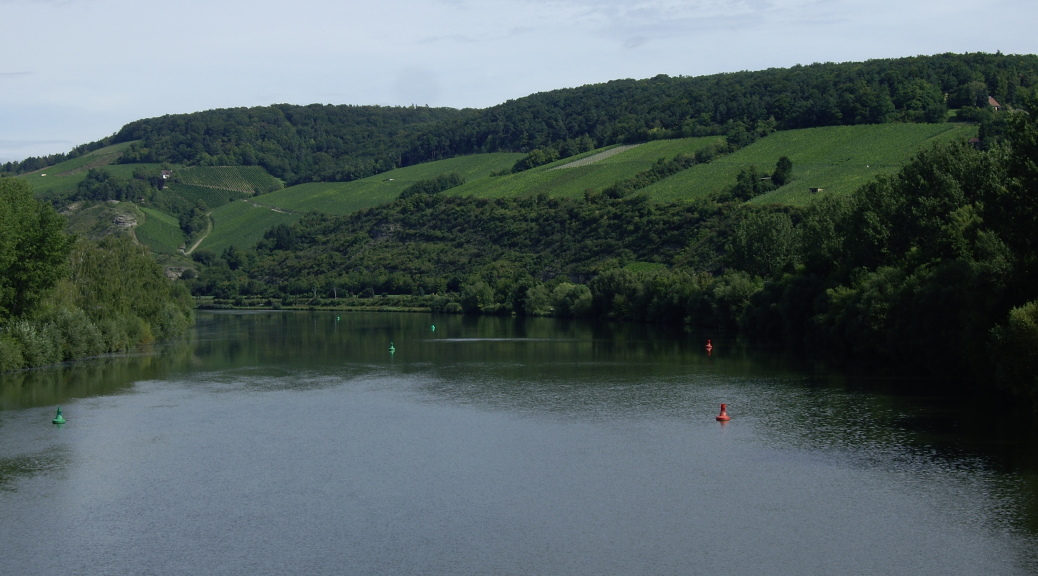The resolve to bike along the Main River began with an earlier visit to the Veitshoechheim Palace and seeing the wide, asphalted bike path on the opposite shore in Margetshoechheim. The Main has always served as a commercial trading artery; barges, ferries, and even cruise ships nowadays, ply the waterway in an unending parade of river life. The Mainradweg trail offers bicyclists a fabulous opportunity to see all this activity, as well as some of Franconia’s most iconic vineyards and wine towns, on a leisurely ride along its gentle banks. It is easy to see why the 375-mile trail, which follows the river from east of Bayreuth to the Rhine at Wiesbaden, consistently wins awards in many categories: The route is well-marked, well-maintained, well-organized with bike-tourism services, and marvelously laid out – passing through idyllic countryside and picturesque villages and towns. It is extremely popular with German tourists, many of whom, judging from the overloaded panniers, complete several stages over a period of days.
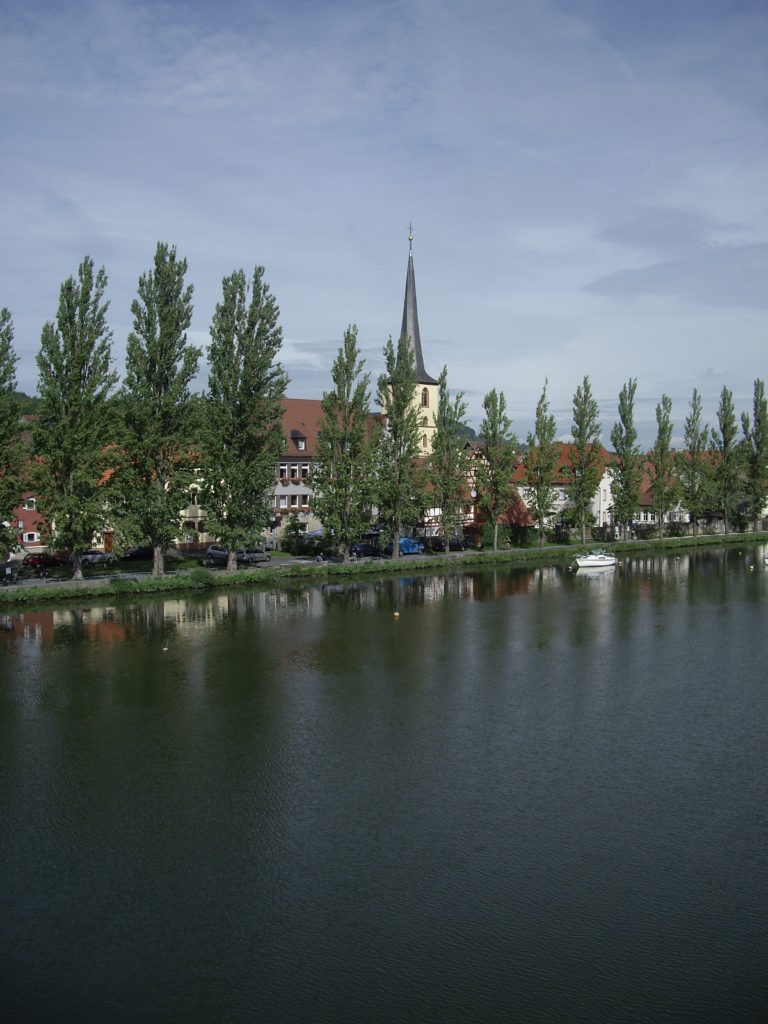
My goal was to bike most of the wine district known as Maindreieck, starting downriver at Margetshoechheim heading upriver to Volkach, sampling the wines along the way. Margetshoechheim to Wuerzburg with its fabulous old center, bishops palace and dominating fortress, is an easy 45 minute ride, mostly along the river banks. As the historic city center comes into sight, the desire to stop (and ultimately spend the night) is unavoidable. The baroque architecture, the spires and domes, the history and ambience, and above all, the old bridge with a wine tavern jutting out from the right bank, with a convenient take-out window on the bridge, all conspire to compel a stay. Choosing a place to lodge or dine isn’t a problem: from the old bridge, which the trail crosses, three or four other taverns on water’s edge are immediately visible, as well as hotels and restaurants.
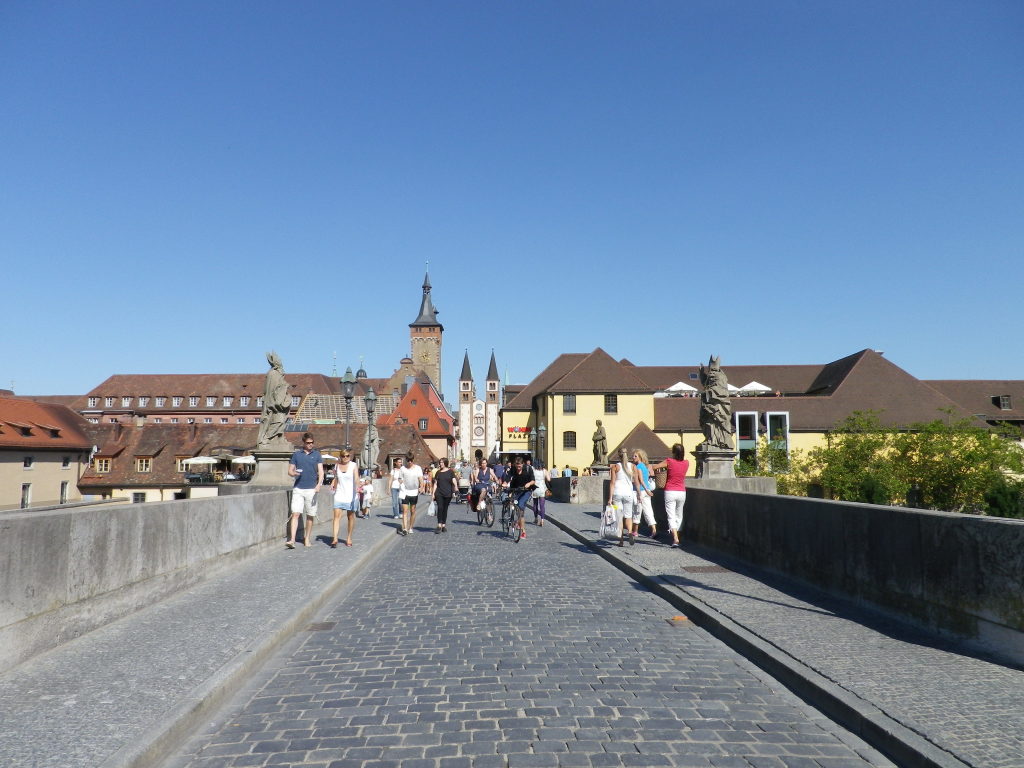
Within the city limits wine is produced from the grapes of the Innere Leiste (beneath the fortress) and the Wuerzburger Stein, (both visible from the bridge). The latter offers short walking tours and tastings. The Main and wine rhyme, and are synonymous with a flourishing wine industry centered around the historic bishophric of Wuerzburg. Franconian wines are highly prized in Germany. They have a millennia-long history, are delicious, and are traditionally sold in a pear-shaped bottle known as the Bocksbeutel.
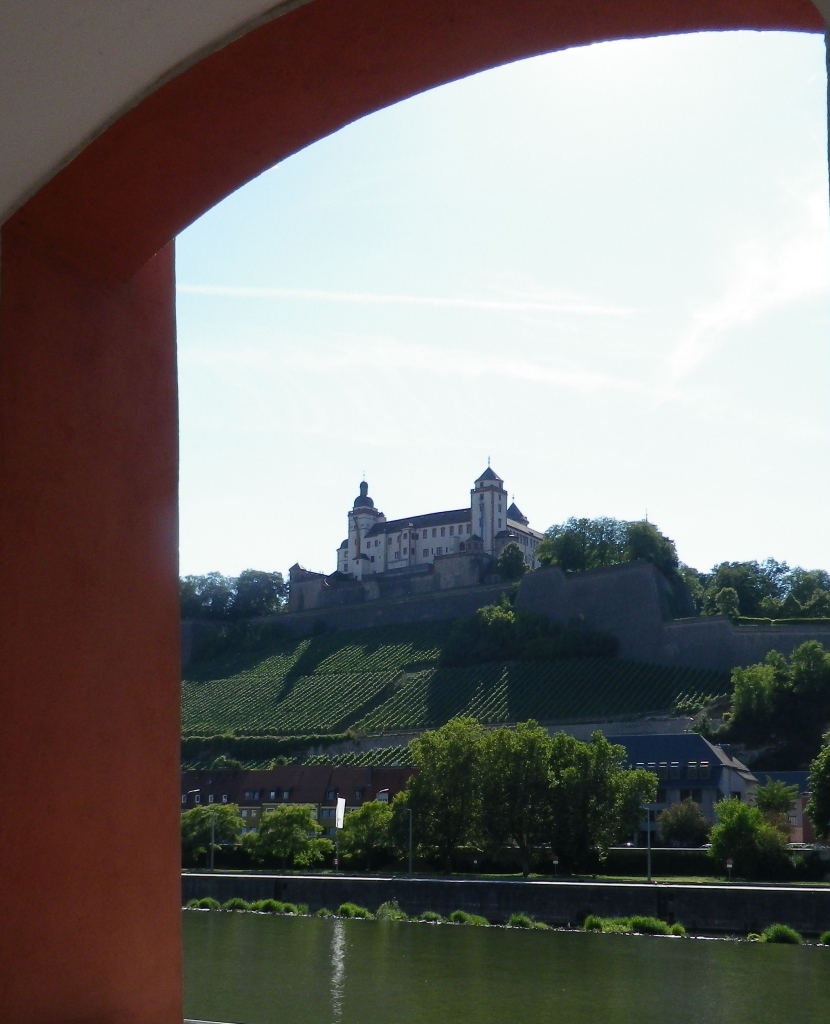
Wuerzburg is particularly bike friendly, with guarded parking for bikes, many repair shops, and dedicated lanes for bikers throughout the city. The Wuerzburg City Tourist Office, not far from the bridge, offers a brochure detailing these services called “Wuerzburg Fuer Radfahrer”, and can help find accommodation suitable for biking tourists.
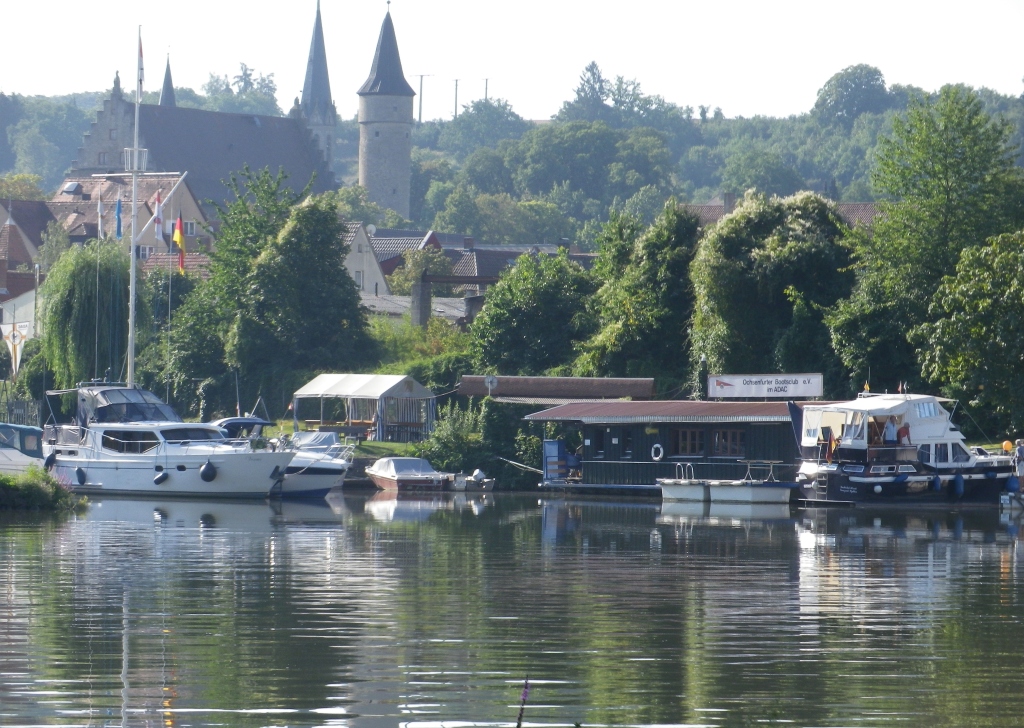
The trail continues along the river to Randersacker, a village which produces some of the best wine Franconia has to offer, and from there to Ochsenfurt, a small town with a picturesque main street (Hauptstrasse). Cross over the bridge to visit the town, or to follow the path on the left bank to Marktbreit, another small town with another historic center behind old city walls.
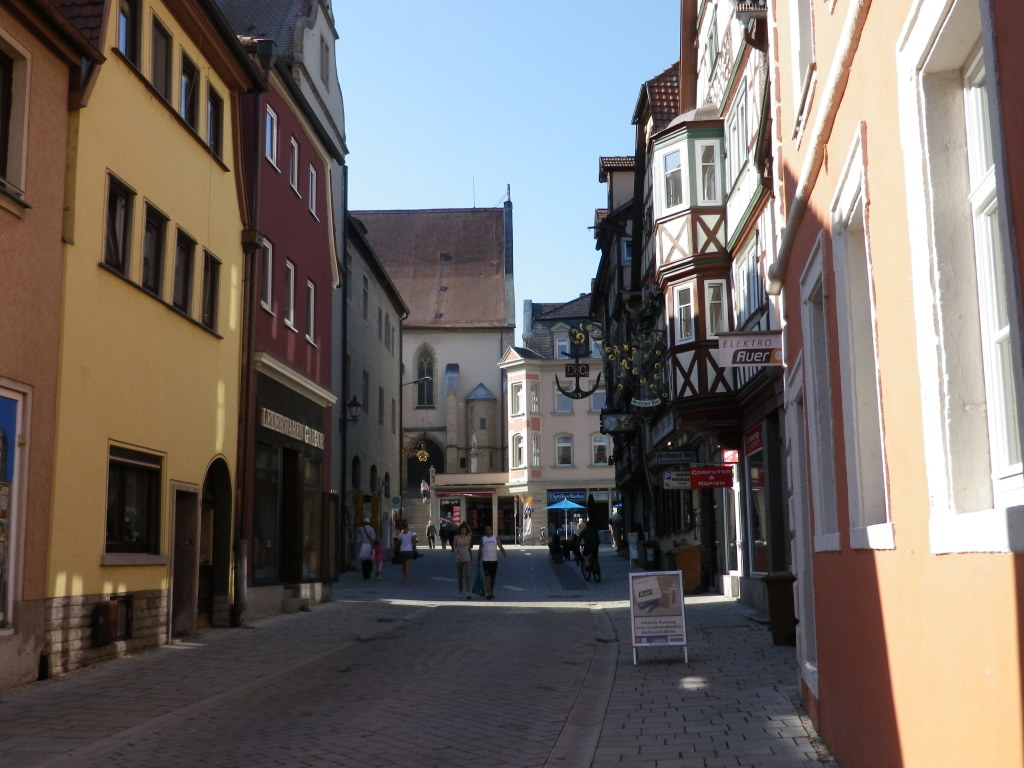
While the ride on either side of Marktbreit isn’t particularly attractive, the motivation to continue is Kitzingen. Crossing on the pedestrian bridge into the center of Kitzingen is a treat. The views up and down river, the peaceful and the attractive town center on the other side, make this another place to spend some time.
After cresting the long rise out of the unspoiled village of Dettelbach, the twin towers of the Muenster Schwarzach Abbey (founded in 788) come into view.
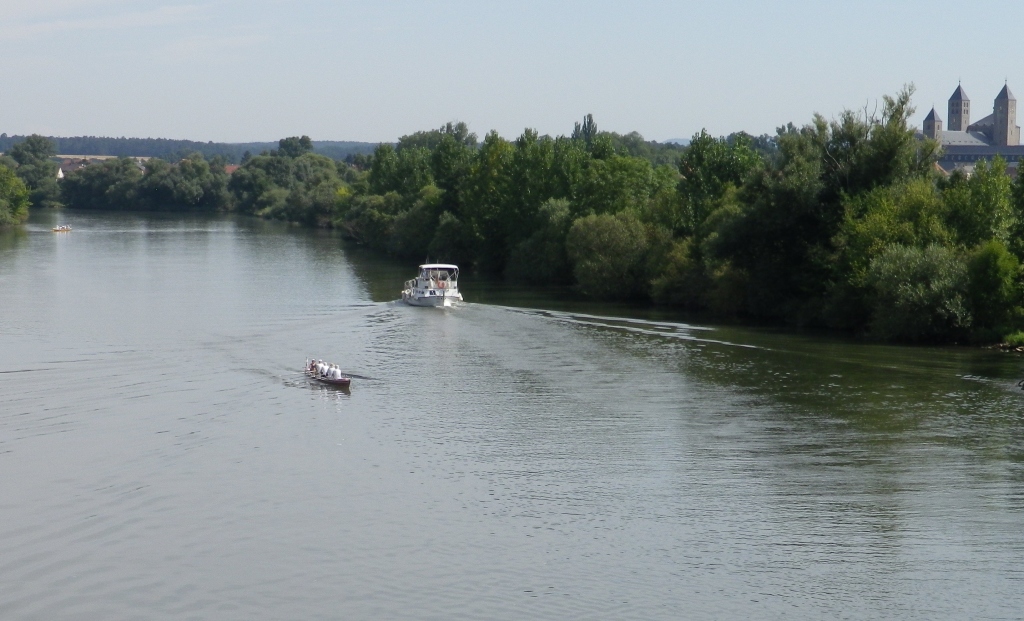
Once through Schwarzach, the trail crosses the Main Canal to enter the Weininsel: the Wine Island, a vine-covered low ridge wedged between the river and the canal. The name pretty much says it all. The small villages of Sommerach and Nordheim, with their famed wines, and equally delightful towns, are busy during summer and fall festival season, but can be dead during the winter and early spring. One attraction that is open year-round is the Vinothek DIVINO in Nordheim. It is a very convenient place to sample and learn about local wines, and has an olfactory exhibit designed to reproduce some of the tastes and smells to be found in wines. Incurring sensory overload, the kid in me insisted on smelling them all.
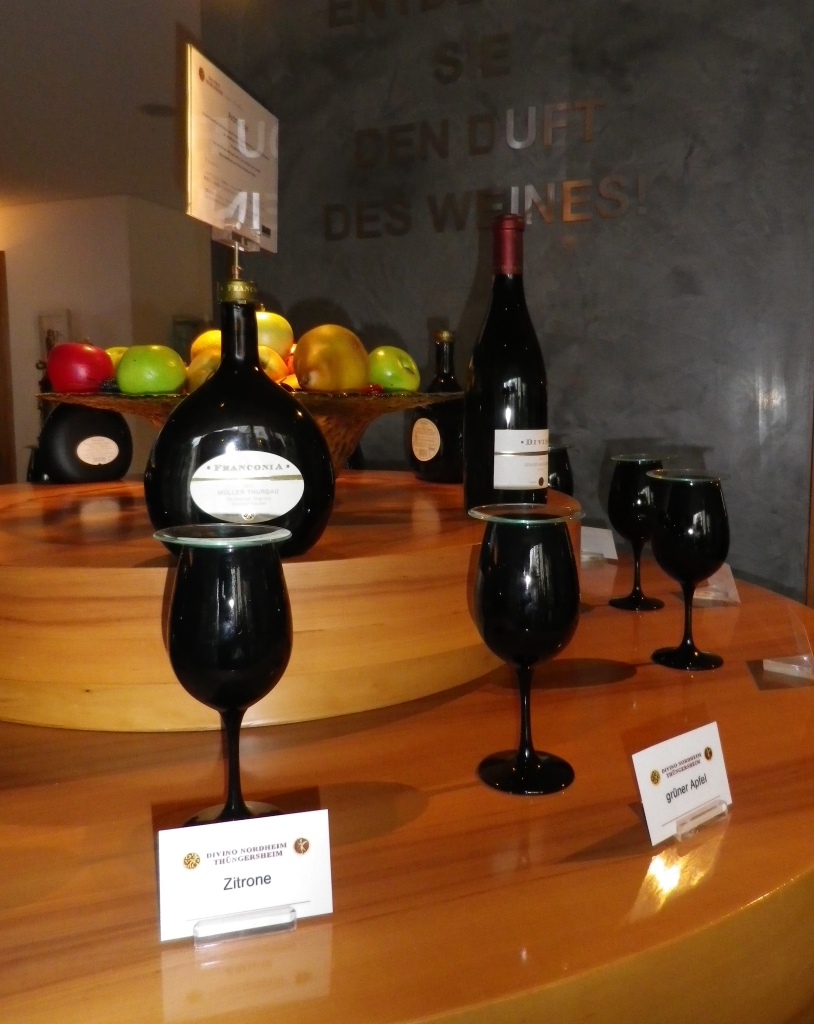
Crossing back over the canal the trail soon comes to Volkach, one of the larger towns in the area. I passed through the old tower gate, and pedaled along the main street lined with buildings of several different architectural periods, spying a restaurant/hotel which offered Franconian food specialties, accompanied by Franconian wines from nearby wineries. It was truly the end of the goal for me!
